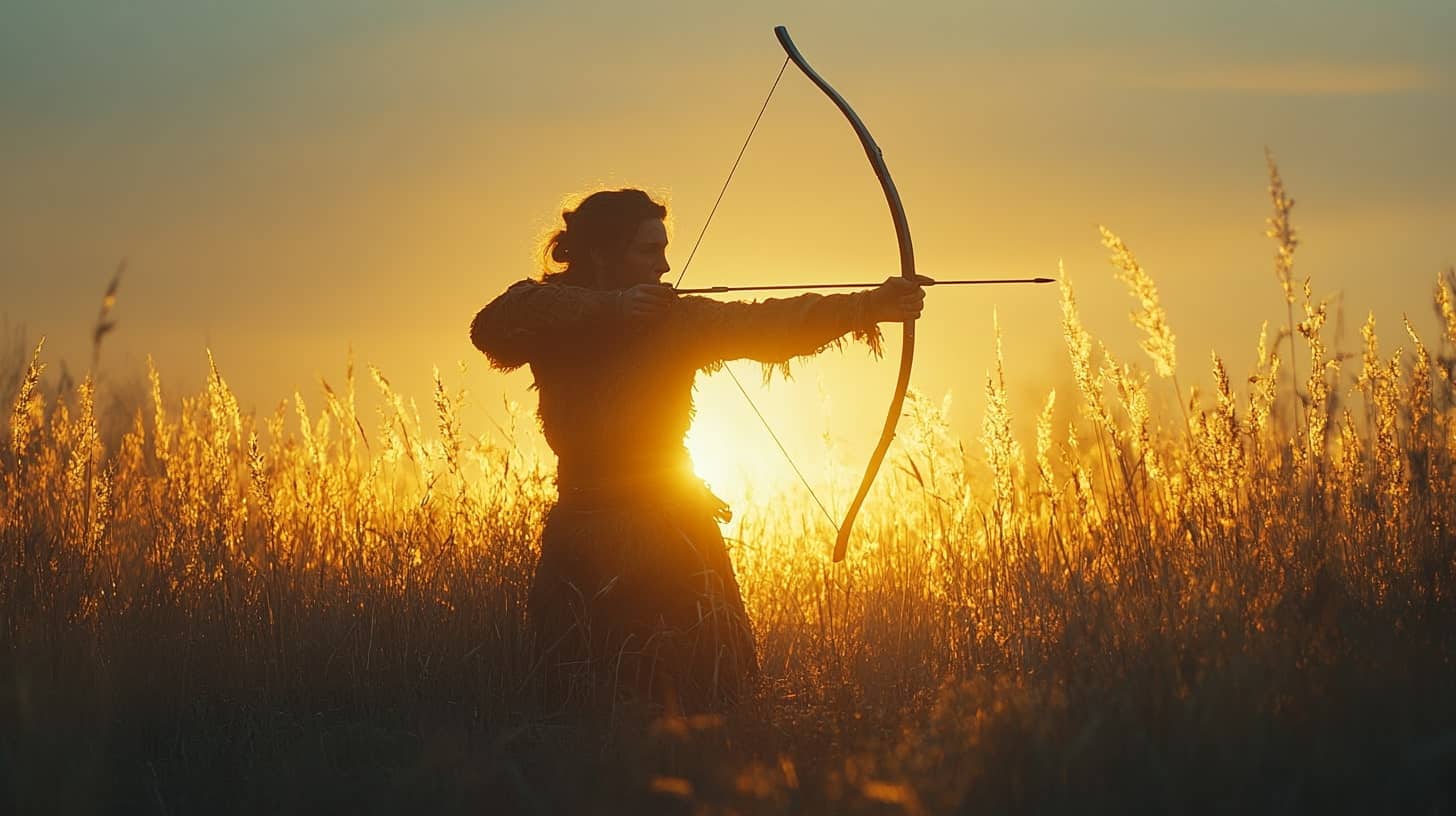Archery hunting is a captivating blend of ancient tradition and modern skill. Rooted in centuries of history, the practice of hunting with a bow has evolved from primitive survival tactics to a refined sport that demands precision, patience, and respect for nature. This article delves into the journey of archery as a hunting method, focusing on the evolution of arrowheads—from the rudimentary stone tips of our ancestors to the sophisticated designs used today—and offers a practical guide for modern archery hunters.
The Historical Roots of Archery
Archery has been a vital skill for human survival since prehistoric times. Early humans relied on bows and arrows to hunt for food and defend themselves from predators. The first arrowheads were made from stone, flint, or bone, shaped meticulously by hand. These primitive tools were not only functional but also represented the ingenuity of early societies in adapting to their environments.
Over the millennia, archery techniques and equipment evolved significantly. Ancient civilizations such as the Egyptians, Greeks, and Mongols refined the art of archery, using it for warfare and hunting. Each culture contributed unique innovations—from the composite bows of the Mongols to the recurve bows of the Middle East—laying the groundwork for the modern sport of archery hunting.
Evolution of Arrowheads: From Stone to Modern Materials
A central element of archery hunting is the arrowhead. The evolution of arrowheads mirrors the advancements in technology and materials over time.
Primitive Arrowheads
The earliest arrowheads were crafted from readily available materials like stone and bone. These tools were honed to a sharp edge through a labor-intensive process. Despite their rudimentary construction, stone arrowheads were effective for close-range hunting. Their design was simple, yet they embodied the essence of human innovation in overcoming the challenges of survival.
Metallic Advancements
With the advent of metallurgy, arrowheads began to incorporate metals such as bronze, iron, and eventually steel. Metal arrowheads offered greater durability, sharper edges, and improved penetration compared to their stone counterparts. This evolution allowed hunters to tackle larger game and adapt to varied hunting conditions. The design of these arrowheads became more sophisticated, reflecting a deeper understanding of aerodynamics and ballistics.
Modern Arrowheads
Today, modern arrowheads are the result of centuries of refinement. Made from advanced alloys and engineered for optimal performance, these arrowheads are both lightweight and incredibly strong. Modern designs often incorporate computer-aided engineering to achieve the perfect balance between sharpness, durability, and aerodynamic efficiency. Whether using broadheads for big game or field points for target practice, the technology behind modern arrowheads highlights the fusion of ancient techniques with contemporary innovation.
Archery Hunting in the Modern Era
Modern archery hunting is more than just a sport—it’s a lifestyle that connects hunters with a rich heritage. Despite the technological advancements in equipment, many archers still embrace traditional methods, preserving the artistry and skill that have been passed down through generations.
Technique and Skill
The beauty of archery hunting lies in its demand for precision and focus. Unlike firearms, archery requires a calm mind and steady hand. Hunters must account for variables such as wind speed, distance, and the movement of the target. This level of engagement not only enhances the thrill of the hunt but also cultivates a deeper connection with nature.
Modern archers often train rigorously, honing their skills through regular practice and participation in competitive events. The process of learning and mastering the bow is a journey that builds discipline, patience, and mental fortitude. Many hunters find that the challenges of archery hunting enhance their overall awareness and appreciation of the natural world.
Ethical Hunting Practices
Archery hunting places a strong emphasis on ethical hunting practices. The closer range required for a successful shot means that hunters must develop exceptional marksmanship to ensure a quick, humane kill. This responsibility drives many archers to invest significant time in training and equipment maintenance. Ethical hunting is at the core of the sport, with many practitioners adhering to strict guidelines that prioritize the well-being of the animals and the sustainability of wildlife populations.
Blending Tradition with Innovation
One of the most fascinating aspects of modern archery hunting is the blend of ancient techniques with modern innovation. While many hunters cherish the traditional form and craftsmanship of the bow, they also take advantage of modern materials and design improvements. Carbon fiber bows, advanced sighting systems, and custom-molded arrows have transformed the sport, making it more accessible and effective than ever before. Despite these advancements, the core principles of archery remain unchanged—a testament to the enduring legacy of this ancient art.
Practical Guide to Modern Archery Hunting
For those interested in taking up archery hunting, preparation and practice are paramount. Below are practical steps to help you begin your journey into this time-honored sport.
1. Choosing the Right Equipment
Selecting the proper equipment is the foundation of successful archery hunting. When choosing a bow, consider factors such as draw weight, size, and ergonomics. Modern bows come in various forms—recurve, compound, and traditional longbows—each with unique advantages. Additionally, consider the type of arrows and arrowheads that best suit your hunting style. Research the evolution of arrowheads to understand how modern designs can enhance your performance, and look for high-quality materials that offer both durability and precision.
2. Training and Practice
Like any other form of hunting, success in archery requires consistent practice. Start by mastering the fundamentals of stance, grip, and aim. Regular practice at a shooting range will help you develop muscle memory and improve your accuracy. Consider taking lessons from experienced archers or joining a local archery club to gain insights and feedback. As your skills progress, simulate real hunting scenarios to build confidence and refine your techniques.
3. Safety and Ethical Considerations
Safety should always be a priority. Ensure that you understand the proper handling and storage of your bow and arrows. Always follow local regulations and guidelines related to archery hunting. Emphasize ethical practices by aiming for a quick and humane shot, which requires a deep understanding of your equipment and a commitment to continuous learning.
4. Preparing for the Hunt
Before heading out into the field, perform a thorough check of your equipment. Clean and inspect your bow, arrows, and other gear to ensure everything is in optimal condition. Familiarize yourself with the terrain and weather conditions of your hunting area. A well-prepared hunter is not only more effective but also safer in the field.
The Cultural Significance of Archery Hunting
Archery hunting is steeped in cultural significance. Many indigenous communities have relied on bows and arrows for centuries, viewing the practice as a spiritual connection to their ancestors and the natural world. Traditional archery techniques are often passed down through generations, preserving a legacy that transcends the mere act of hunting. In modern times, this cultural heritage is celebrated through tournaments, exhibitions, and educational programs that showcase the art of archery.
For many enthusiasts, engaging in archery hunting is a way to honor the past while embracing the innovations of the present. It is a reminder that, despite technological advancements, the core values of skill, precision, and respect remain timeless. By participating in this ancient art, modern archers contribute to a living tradition that continues to evolve and inspire.
Conclusion
Archery hunting is a multifaceted art that bridges the gap between the ancient and the modern. From the humble beginnings of stone arrowheads to the sophisticated designs of today’s equipment, the evolution of archery reflects the enduring spirit of human ingenuity. This comprehensive guide has explored the historical roots, the progression of arrowheads, and the practical aspects of modern archery hunting. Whether you are a seasoned hunter or a curious newcomer, the journey into this ancient art offers a unique blend of tradition, innovation, and personal challenge.
Embrace the meticulous practice and respect for nature that archery hunting demands. With the right equipment, rigorous training, and an ethical approach, you can experience the thrill of the hunt while preserving a legacy that has shaped human history for thousands of years. May your journey into the world of archery hunting be both rewarding and enlightening, as you carry forward a timeless tradition into the modern era.



